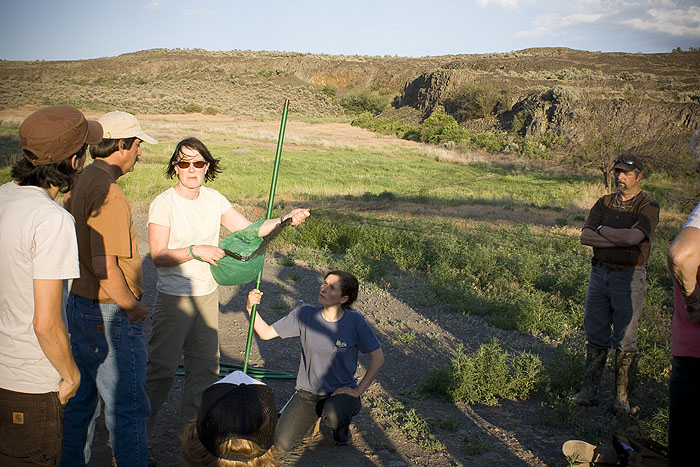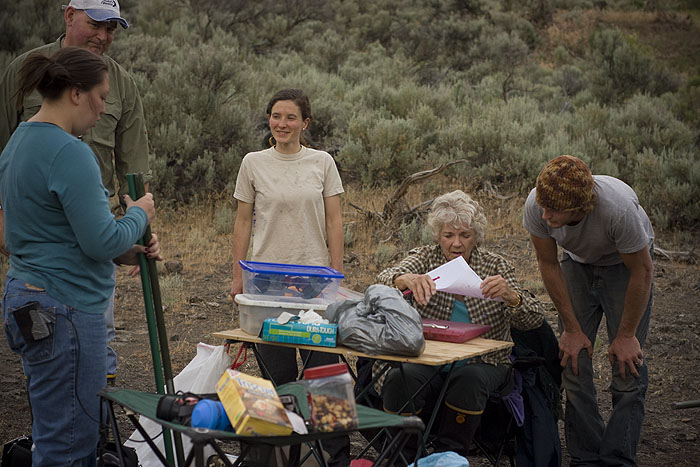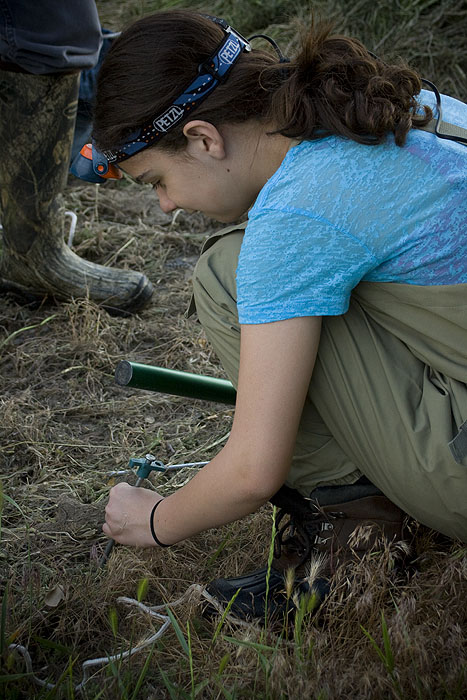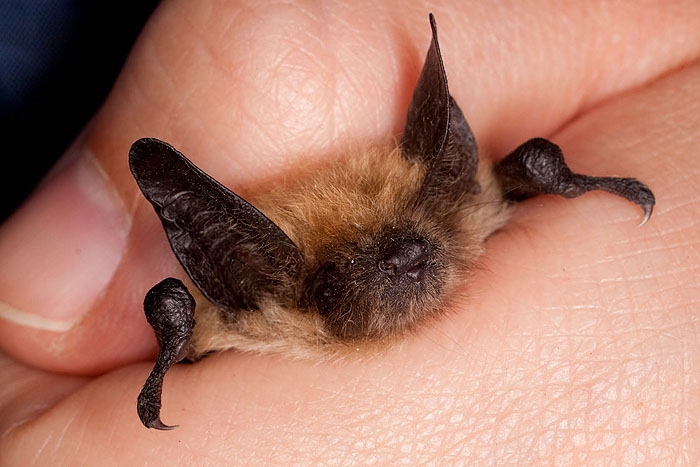Our view from Whisper Lake lodge...

The most interesting bat research takes place after dark. Last night our location was over a small coulee just two miles away from the lodge. The moment we stepped out of the car, we were greeted by one of the local rattlesnakes, as well as one of the friendly bat biologists, who outfitted Iz and I with headlamps. Iz was also outfitted in waders and boots so she could help string nets in the stream. There were about ten students being trained on capturing, identifying and measuring bats who live in this area.


Pat demonstrates the proper way to put up a net for bat capturing...

Here's the official site where bats will later be brought for identifying...

Once captured, the bats are weighed, measured, sexed, and identified by species before they are released. And this is the very visually cool part. You'll just have to imagine it for now. A glow stick is attached to the bat's chest using a temporary, non-toxic paste. This allows the researchers to properly point microphones and record the bat’s vocalization (ultrasonic call). For those of us spectators, it’s an amazing sight to see a bat traversing the moonless sky until you can no longer decipher it from the stars.
Iz was given the important job of tying and staking net poles to keep the nets from falling into the stream... She did a great job!

Here’s one of the bats that flew into one of the nets... Iz and I were not able to handle them since we don’t have rabies vaccines. This is a Myotis thysanodes... also knows as a Fringed Bat.

Isn't he the cutest little thing you've ever seen?
...